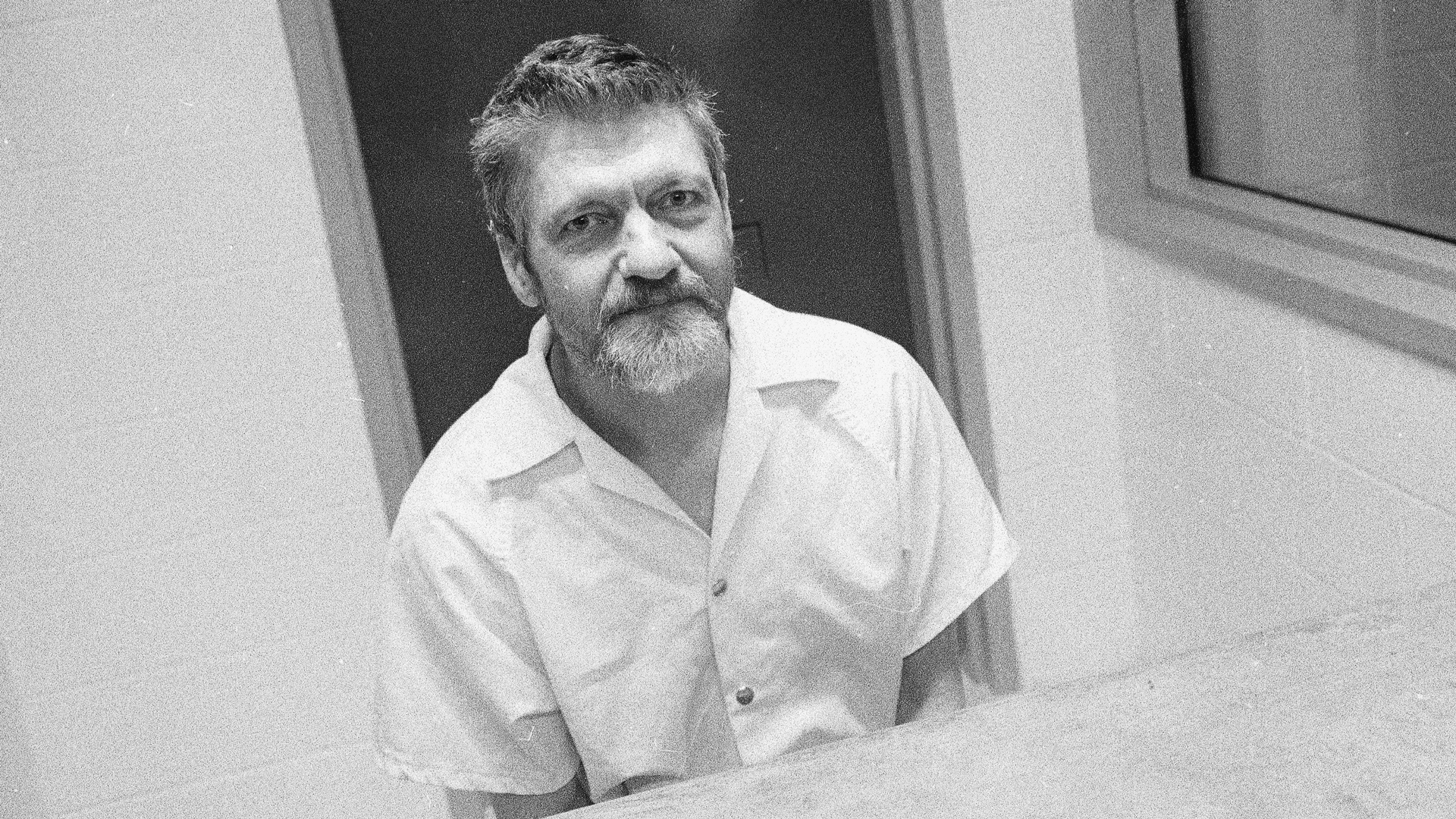Most of us picture our childhood neighbors as harmless eccentrics or kind strangers. But for Jaime Gehring, the man next door wasn’t just odd—he was Theodore “Ted” Kaczynski, the Unabomber.
In her memoir, Madman in the Woods, Gehring shares what it was like growing up next to the Unabomber in the Montana wilderness. Her account is more than just a true crime tale—it’s a harrowing reminder that evil can live quietly, undetected, just across the fence.
A Quiet Monster With Painted Rocks
Kaczynski, a recluse with a shack in the woods, occasionally offered small gifts to young Jaime—painted rocks, hand-carved trinkets, and an unsettling kindness that masked his true intentions.
“One moment, he was painting a rock for me,” Gehring recalls. “The next, he was constructing a bomb to kill someone.”
Kaczynski, diagnosed with paranoid schizophrenia, led a double life. Even his own brother, David, would later say Ted had two completely different personalities.
Jaime’s father, disturbed by the implications of keeping those mementos, buried the painted rocks deep on their property—where they remain as eerie relics.
When Innocence Meets Unease
As a child, Gehring didn’t fear Kaczynski. But that changed with time.
His disheveled appearance, sooty skin, and unkempt nails began to raise red flags. Still, he’d knock on the door with innocent questions—once just asking for the time. Gehring would hide in a closet, her instincts sensing danger her family dismissed.
“Adults said I was imagining things. But now I know—children often sense what we overlook.”
Her family wondered, “Who is this man?” But Kaczynski remained evasive, guarded, and disturbingly polite.
The Unseen Danger
Years later, the truth unraveled in horrifying detail.
Kaczynski was responsible for 16 bombings, killing 3 and injuring 23 between 1978 and 1995. But it wasn’t just the national news that horrified Gehring—it was the personal revelations hidden in his journals.
She now believes he poisoned her dog, Wiley. Even more chilling, she discovered he once pointed a gun at her stepmother and younger sister in the woods—something the family never knew until after his arrest.
“There were nights I cried writing the book,” she admits. “His words about victims—calling them ‘experiments’—were inhuman.”
The more she read, the more she realized: her family had been unimaginably lucky.
A Father’s Secret Assignment
As the FBI closed in on Kaczynski, Gehring’s father was drawn into the investigation. Agents approached him about threatening letters linked to Ted, then revealed their suspicion: his odd neighbor might be the Unabomber.
“My dad said, ‘No way. That’s just Teddy.’”
But the FBI asked him to stay silent—even to his wife—and to record video surveillance of the area around Kaczynski’s cabin.
“The FBI told him to live normally beside a homicidal maniac,” Gehring says. “I can’t imagine how terrifying that was.”
Just weeks later, a raid on the infamous shack confirmed it all: Ted Kaczynski was the Unabomber.
Why We’re Drawn to Monsters
Gehring understands society’s obsession with true crime—even when the killer lived next door.
“We want to understand why. For me, learning the ‘why’ helped me find peace.”
Despite her close proximity to one of history’s most notorious criminals, she still believes in human goodness—but with one key caveat.
“Trust your gut. Especially kids’ instincts. If something feels wrong, it probably is.”
The Childhood That Could’ve Ended in Tragedy
Jaime Gehring’s story isn’t about a fascination with murder. It’s about surviving the shadow of a monster.
In hindsight, her family was dangerously close to becoming Kaczynski’s next victims. And yet, they lived—left instead with the burden of having once welcomed a terrorist into their lives.
Her memoir is more than a retelling. It’s a cautionary tale that evil doesn’t always wear a mask. Sometimes, it paints rocks.
Frequently Asked Questions
Who was Ted Kaczynski?
Known as the Unabomber, Ted Kaczynski conducted a nationwide bombing campaign from 1978 to 1995, targeting academics, airlines, and technological institutions.
Did Jaime Gehring know she lived next to the Unabomber?
No. She and her family knew him only as “Teddy,” a peculiar but seemingly harmless neighbor.
What is phrogging, and is it related to this story?
No. Phrogging involves secretly living in someone else’s home. Kaczynski lived alone in a shack—his terror came not from intrusion, but explosive violence.
What is the title of Jaime Gehring’s book?
Madman in the Woods: Life Next Door to the Unabomber.
How did the FBI identify Kaczynski?
His brother, David Kaczynski, recognized Ted’s writing in the Unabomber manifesto and alerted authorities.
Why does Gehring share her story?
To help others understand how evil can hide in plain sight—and how trusting your intuition can be lifesaving.

